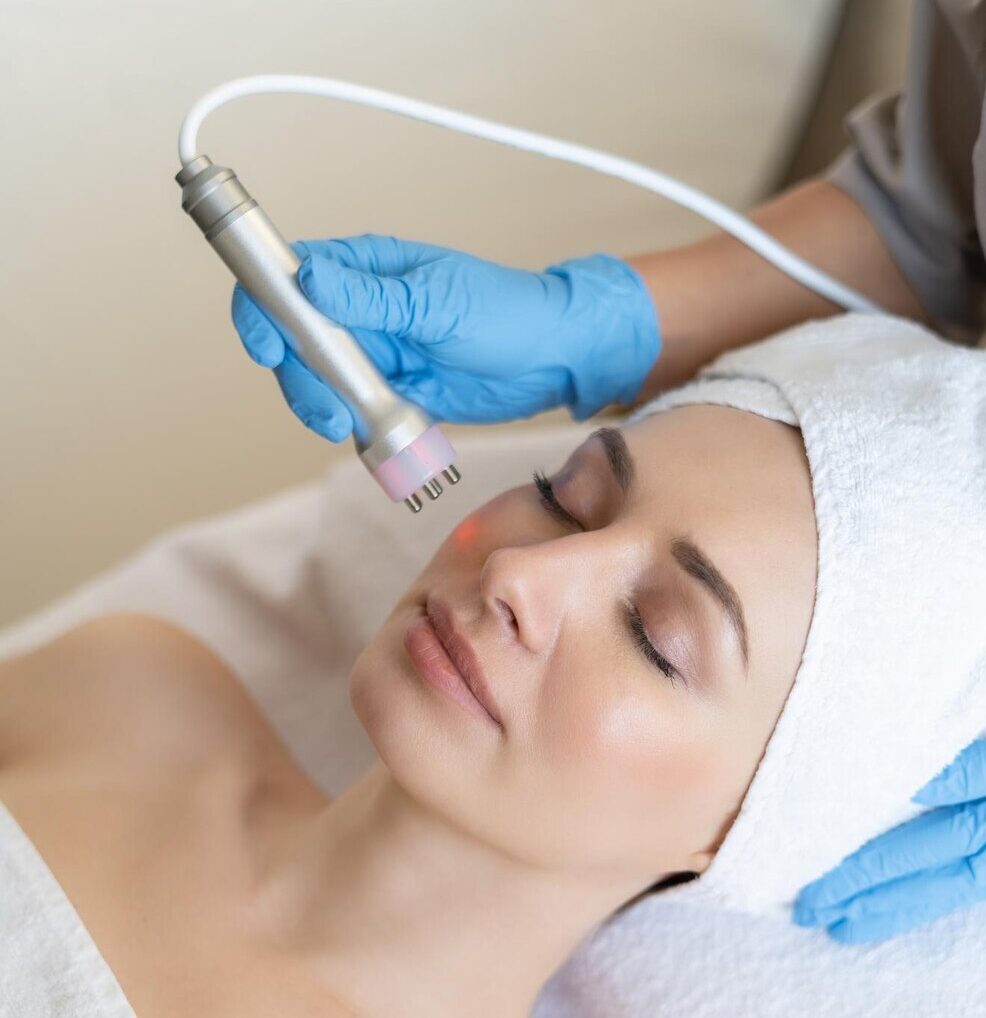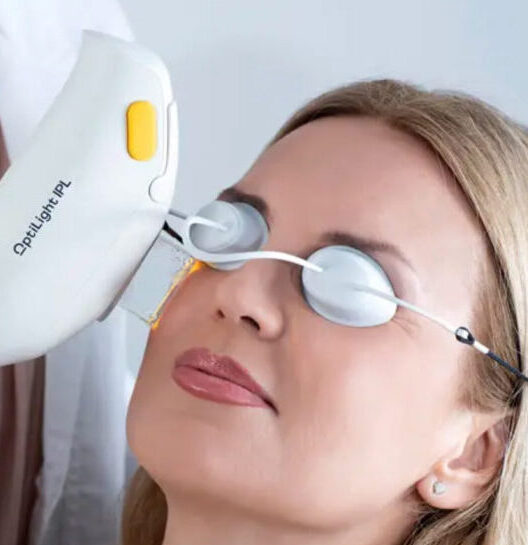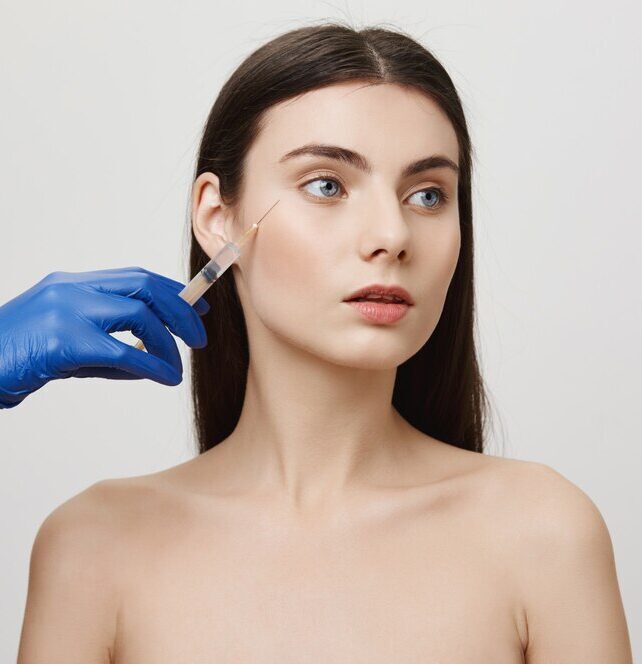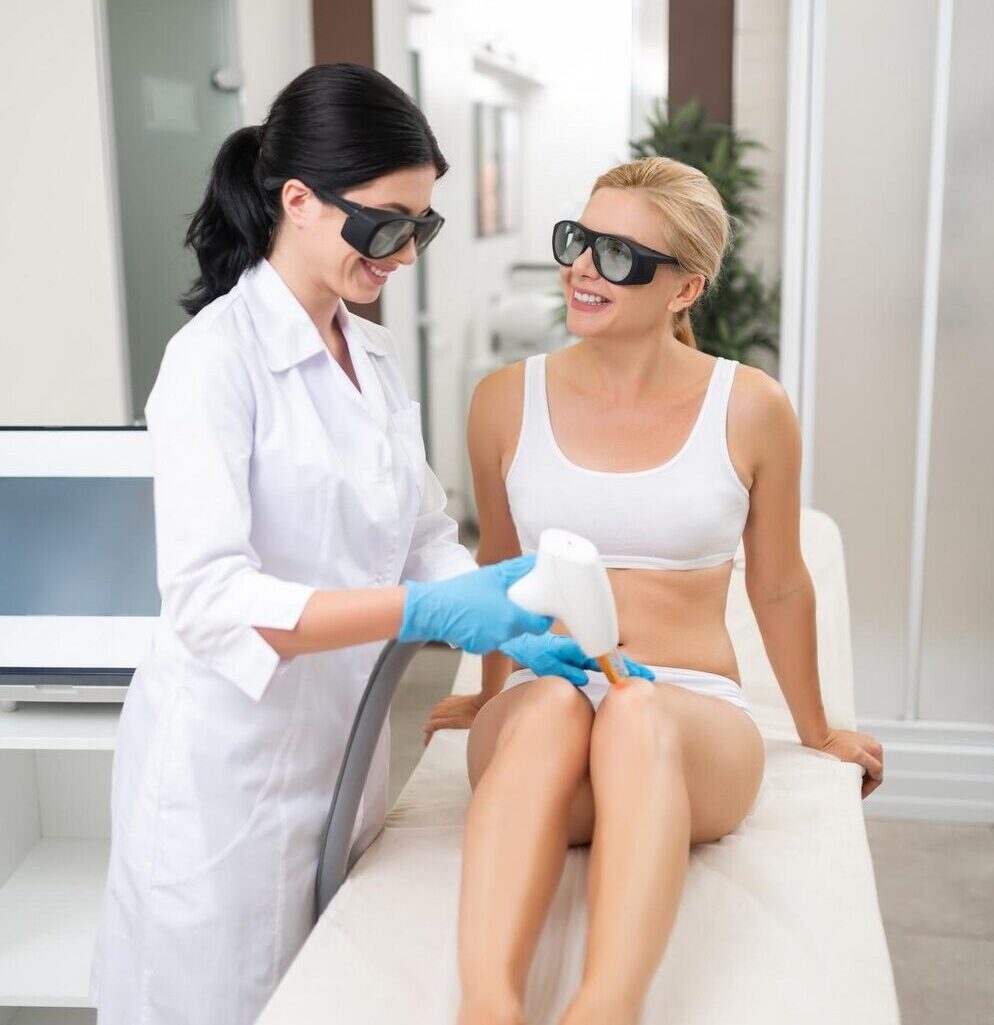PDO (Polydioxanone) threads are dissolvable sutures made of a safe and absorbable material that is commonly used in medical procedures.
PDO threads are inserted into the skin through a needle or a cannula, and the barbs or hooks on the threads help to lift and tighten sagging skin, creating a more youthful appearance.
PDO threads are absorbed by the body over a period of four to six months, after which the effects of the treatment begin to gradually diminish.
The benefits of PDO threads for a facelift include immediate improvement in skin tightness, non-invasive treatment, no surgical incisions, and relatively quick recovery time.
PDO thread facelifts are performed with local anesthesia, so most patients experience only minimal discomfort during the procedure.
Recovery time after a PDO thread facelift is relatively quick, with most patients resuming normal activities within a few days.
Common side effects of a PDO thread facelift include swelling, redness, and bruising at the treatment site, which typically resolve within a few days.
Yes, PDO threads can be used in combination with other facelift treatments such as fillers, Botox, and laser treatments for a more comprehensive rejuvenation.
A good candidate for a PDO thread facelift is someone who has mild to moderate skin laxity and wants to improve their appearance without a surgical facelift.
The number of PDO thread facelift treatments required can vary based on individual factors and the desired results, but typically one or two treatments are recommended.
PDO thread facelifts are considered to be cosmetic procedures and are not typically covered by insurance. It’s important to discuss the cost of treatment with a qualified practitioner before starting treatment.
PDO (Polydioxanone) threads are dissolvable sutures made of a safe and absorbable material that is commonly used in medical procedures.
PDO threads are inserted into the skin through a needle or a cannula, and the barbs or hooks on the threads help to lift and reshape the nose, creating a more aesthetically pleasing appearance.
PDO threads are absorbed by the body over a period of four to six months, after which the effects of the treatment begin to gradually diminish.
The benefits of a PDO thread non-surgical nose lift include a non-invasive treatment, no surgical incisions, quick recovery time, and immediate improvement in nose shape and appearance.
A PDO thread non-surgical nose lift is performed with local anesthesia, so most patients experience only minimal discomfort during the procedure.
Recovery time after a PDO thread non-surgical nose lift is relatively quick, with most patients resuming normal activities within a few days.
Smooth PDO threads are thin, absorbable sutures made of polydioxanone (PDO), a material commonly used in surgical procedures. These threads are inserted into the skin to lift and tighten sagging skin and improve the appearance of fine lines and wrinkles.
The threads are inserted into the skin using a fine needle and then positioned to lift sagging skin and create a more youthful appearance. The threads stimulate collagen production in the skin and provide an immediate lifting effect. Over time, the threads dissolve and are absorbed into the body, leaving behind newly generated collagen for long-lasting results.
Smooth PDO threads offer a non-invasive solution for skin tightening and rejuvenation, with minimal downtime and minimal risk of complications. They can also be used in combination with other cosmetic treatments for more comprehensive results.
Smooth PDO threads are considered safe for use in cosmetic procedures. However, as with any medical treatment, there is a risk of side effects and complications, such as infection, bruising, or swelling. It’s important to seek treatment from a qualified and experienced professional to minimize these risks.
Agnes RF facelift is a treatment that doesn’t involve surgery. It uses radiofrequency energy to make your skin tighter and firmer, smooth out wrinkles and lines, and make your skin look better.
Agnes RF facelift uses a special tool that sends heat deep into the skin layers. This heat makes the skin tighter and firmer. It also encourages the skin to make more collagen, which keeps the skin firm and elastic.
Agnes RF facelift is usually safe when done by a skilled practitioner. It’s a non-invasive procedure without any cuts or surgeries.
Agnes RF facelift makes your skin smoother and more even, lessens wrinkles and fine lines, and gives your face a tighter, firmer look.
The Agnes RF facelift usually takes between 30 minutes to an hour to finish.
After an Agnes RF facelift, you don’t need any downtime. Most people can go back to their regular activities right away after the procedure.
The effects of Agnes RF facelift can stay for a few months to over a year. It depends on your skin type and how severe your skin issues are.
Agnes RF facelift works best for people with a little bit of loose skin, wrinkles, or fine lines. But if your skin is very saggy or if you have certain medical issues, this procedure might not be the best choice for you.
After getting an Agnes RF facelift, some people might experience temporary redness, swelling, and sensitivity when touched. Usually, these effects go away within a few hours to a few days.
The price of an Agnes RF facelift may change based on where on the face it’s done and how much is involved. Usually, it ranges from $700 to $2000.
Yes, you can combine the Agnes RF facelift with other cosmetic treatments like fillers, Botox, and chemical peels to improve the overall outcome.
All frown line treatments require a special ingredient to stabilize botulinum toxin A, the protein responsible for helping smooth moderate to severe frown lines. For instance, BOTOX® Cosmetic uses human serum albumin (HSA), a blood product, as its stabilizer. Dysport®, another frown line treatment, uses HSA as a stabilizer and cow’s milk protein as a protectant.
DAXXIFY® is unique because it is the only formulation that uses a novel peptide as a stabilizer and does not contain human or animal byproducts.
DAXXIFY® is the only long-lasting frown line treatment powered by a peptide.
Results last on average 6 months and up to 9 months for some.†
All frown line treatments require a special ingredient to stabilize botulinum toxin A, the protein responsible for helping smooth moderate to severe frown lines. For instance, BOTOX® Cosmetic uses human serum albumin (HSA), a blood product, as its stabilizer. Dysport®, another frown line treatment, uses HSA as a stabilizer and cow’s milk protein as a protectant.
DAXXIFY® is unique because it is the only formulation that uses a novel peptide as a stabilizer and does not contain human or animal byproducts.
DAXXIFY® was studied in the largest-ever clinical study for a frown line treatment and included more than 2,800 people across different ages and skin types. Here are some things you should know about DAXXIFY®:
Ask your aesthetic provider for pre-treatment instructions prior to your DAXXIFY® appointment.
A list of common avoidances before treatment include, but are not limited to:
DAXXIFY® injections are typically performed with a small needle and people treated with frown line treatments say the injection feels like a pinch.
If you are concerned about discomfort, talk to your injector about options for minimizing pain, such as icing the area or applying a topical numbing cream. Treatment with DAXXIFY® requires minimal downtime, and you can return to your daily routine immediately after your appointment.
There is a possibility that the area around the injection site will swell, turn red, and cause pain or tenderness from the injection itself; however, these side effects are typically very minor and go away after a few hours or days.
Dermal fillers are injectable products that are used to restore volume and smoothness to the face by filling in wrinkles, fine lines, and other facial depressions.
Sculptra is generally considered safe when administered by a qualified and experienced practitioner. However, as with any medical procedure, there are some risks and potential side effects, such as swelling, bruising, and infection.
Most people can return to their normal activities immediately after a Sculptra injection. However, some swelling and bruising may occur, which can take a few days to resolve.
Sculptra is not permanent and will eventually be absorbed by the body. However, the effects of Sculptra can last up to two years or more, depending on the individual and the area treated.
Laser Blepharoplasty is usually safe when done by a skilled plastic surgeon. But like any surgery, it has risks and side effects. Talk to your doctor before getting it done.
The time for Laser Blepharoplasty can vary based on how much is being done but usually takes between 30 minutes to two hours.
Laser Blepharoplasty is a type of cosmetic surgery that uses laser technology to reshape the upper and lower eyelids. The procedure involves removing excess skin and fat to improve the appearance of the eyes and reduce the signs of aging.
Laser Blepharoplasty is usually safe when done by a skilled plastic surgeon. But like any surgery, it has risks and side effects. Talk to your doctor before getting it done.
Laser Blepharoplasty helps decrease puffiness and bags under the eyes, enhances the look of sagging eyelids, gives a younger and fresher look, and can improve vision when droopy skin blocks eyesight.
People who are good candidates for Laser Blepharoplasty have extra skin or fat around their upper or lower eyelids, which affects how they look or see. This procedure is usually done on those who are 35 years old or older.
Laser eyelid surgery risks may include swelling, bruising, dry eyes, infection, unevenness, and the chance of scarring. It’s important to talk about these with your doctor before the procedure.
The time for Laser Blepharoplasty can vary based on how much is being done but usually takes between 30 minutes to two hours.
Recovery time after Laser Blepharoplasty can vary, but most patients are able to return to work within a week and resume normal activities within two weeks.
It’s common to feel some discomfort and swelling after Laser Blepharoplasty, but usually, any pain can be relieved with over-the-counter painkillers.
The effects of Laser Blepharoplasty can last for many years, but how long they last can differ based on factors like age and skin condition.
In traditional Blepharoplasty, doctors use a scalpel to make cuts, but Laser Blepharoplasty uses laser technology for more precise cuts and reshaping of the eyelids. The laser also stops bleeding and reduces the need for stitches by sealing blood vessels.
During your laser blepharoplasty consultation, the surgeon will examine your eyelids and overall health. They’ll talk with you about your goals and what you expect from the procedure. They’ll also explain how the procedure works and discuss any risks or side effects. You can ask questions, and they’ll give you clear instructions on how to prepare for the surgery.
Lower Eye Bag Removal is a cosmetic procedure that gets rid of extra skin and fat from below the eyes to make under-eye bags look better and give a younger, more refreshed look.
People who have noticeable bags under their eyes that make them look tired or older are good candidates for lower-eye bag removal. This procedure is usually done on individuals who are 35 years old or older.
Removing lower eye bags can be done in two ways: with surgery or without surgery. The choice depends on what each person needs and wants.
Possible risks of Lower Eye Bag Removal include swelling, bruising, dry eyes, infection, uneven appearance, and chance of scarring. Make sure to talk about these with your doctor before the procedure.
Before getting lower eye bag removal, talk to your doctor about any health issues or medicines you’re using. Follow their advice to stop taking blood-thinning drugs. Also, make sure someone can drive you home afterward, and plan to take time off work to recover.
Double eyelid surgery, also called Asian blepharoplasty, is a cosmetic procedure that makes a fold in the upper eyelid to enhance how the eyes look, making them seem younger and more refreshed.
People who have a small or flat eyelid fold or want to improve how their eyes look are good candidates for Double Eyelid Surgery. Usually, this surgery is done on individuals who are 18 years old or older.
Double eyelid surgery is usually done with local anesthesia or IV sedation. It includes making a small cut in the eyelid to create a fold. The cut is then closed with stitches or skin glue.
After double eyelid surgery, recovery time can differ, but many patients can go back to work in about a week and do regular things in about two weeks.
It’s normal to feel some discomfort and swelling after Double Eye Lid Surgery. But usually, any pain can be eased with basic pain medication you can buy without a prescription.
Possible risks of Double Eyelid Surgery are swelling, bruising, dry eyes, infection, uneven appearance, and chance of scarring. Make sure to talk about these with your doctor before having the surgery.
During the meeting for Double Eyelid Surgery, the doctor will check your upper eyelids and overall health, talk about your goals and what you expect, and explain how the surgery works and what could go wrong. They will also answer any questions you have and tell you exactly what to do to get ready for the surgery.
Epicanthaloplasty is a cosmetic surgery where the fold in the inner corner of the eye is changed or taken away. The aim is to make the eyes look more open and less slanted, which can make the face look better.
People who have a noticeable epicanthal fold or want to enhance their eye appearance are good candidates for Epicanthaloplasty. This procedure is usually done on individuals who are 18 years old or older.
After Epicanthaloplasty, people usually take about a week off work and two weeks before they’re fully back to normal activities.
It’s normal to feel some discomfort and swelling after Epicanthaloplasty, but usually, any pain can be relieved with over-the-counter pain medication.
Here, you’ll find answers to questions about Intense Pulsed Light Therapy (IPL) for treating dry eyes and refreshing your face. IPL therapy is a gentle treatment that uses special light to help with dry eyes, especially when caused by meibomian gland dysfunction (MGD).
IPL therapy helps by using light to open up blocked meibomian glands, lessen swelling, boost gland activity, and make the tear film better.
No, IPL therapy works best for dry eyes caused by MGD and evaporative dry eye syndrome. It might not work as well for other kinds of dry eye problems.
Most people need to have several IPL sessions, usually between three to six sessions. They’re usually spread out over a few weeks.
Common side effects of IPL include temporary redness and slight discomfort, but serious side effects are rare. Make sure to have IPL done by a trained specialist.
IPL therapy is usually okay and doesn’t hurt much. Some people might feel a little uncomfortable or warm during the treatment.
How long does an IPL session for dry eyes take?
You don’t usually need to rest much after an IPL session. Most people can go back to their usual activities right away.
Your dry eye symptoms might get better slowly over a few weeks to months as your meibomian glands heal and start making better oils.
Before getting ptosis repair, talk to your doctor about any health issues or medicines you’re using. Follow their advice about stopping blood thinners. Also, plan for someone to drive you back home after the procedure. You’ll need some time off work to recover.
Sure! IPL therapy can be combined with other treatments like warm compresses, cleaning your eyelids, using artificial tears, and taking prescribed medications to effectively manage dry eyes.
Before getting ptosis repair, make sure to talk with your doctor about the possible risks. These may include bleeding, infection, dry eyes, uneven results, and the chance of scars.
Here, you’ll find answers to questions about Intense Pulsed Light Therapy (IPL) for treating dry eyes and refreshing your face. IPL therapy is a gentle treatment that uses special light to help with dry eyes, especially when caused by meibomian gland dysfunction (MGD).
IPL therapy helps by using light to open up blocked meibomian glands, lessen swelling, boost gland activity, and make the tear film better.
No, IPL therapy works best for dry eyes caused by MGD and evaporative dry eye syndrome. It might not work as well for other kinds of dry eye problems.
Most people need to have several IPL sessions, usually between three to six sessions. They’re usually spread out over a few weeks.
Common side effects of IPL include temporary redness and slight discomfort, but serious side effects are rare. Make sure to have IPL done by a trained specialist.
IPL therapy is usually okay and doesn’t hurt much. Some people might feel a little uncomfortable or warm during the treatment.
How long does an IPL session for dry eyes take?
You don’t usually need to rest much after an IPL session. Most people can go back to their usual activities right away.
Your dry eye symptoms might get better slowly over a few weeks to months as your meibomian glands heal and start making better oils.
Before getting ptosis repair, talk to your doctor about any health issues or medicines you’re using. Follow their advice about stopping blood thinners. Also, plan for someone to drive you back home after the procedure. You’ll need some time off work to recover.
Sure! IPL therapy can be combined with other treatments like warm compresses, cleaning your eyelids, using artificial tears, and taking prescribed medications to effectively manage dry eyes.
Before getting ptosis repair, make sure to talk with your doctor about the possible risks. These may include bleeding, infection, dry eyes, uneven results, and the chance of scars.
Toggle Content
Toggle Content
Toggle Content
Laser face vein removal is a non-surgical treatment. It uses lasers to lessen or remove noticeable veins on your face, like spider veins and broken capillaries.
Laser treatment is mainly used for small veins like spider veins and broken capillaries on the face. It’s not good for treating bigger veins or varicose veins.
The laser sends out a special type of light that gets absorbed by the blood
Many patients feel only a little discomfort, like a small sting or a snap like a rubber band on the skin. Before the procedure, the doctor might put a numbing cream on the skin to make it less uncomfortable.
One session usually lasts from 15 to 30 minutes, depending on how big the area is and how many veins need treatment.
You might need different numbers of sessions, but usually, you’ll need several treatments. These are done a few weeks apart to get the best results.
Usually, there’s not much downtime. You might have a little redness or slight swelling, but it usually goes away within a few hours or a day.
Side effects might include temporary redness, swelling, bruising, or changes in skin color. Serious problems like scarring or changes in skin texture are rare but possible.
The effects can last a long time, but you might get new facial veins as time goes on. You might need to have maintenance sessions every now and then to keep the results you want.
People with visible facial veins who are generally healthy are good candidates. It’s important to talk to a qualified practitioner to see if the procedure is right for you.
Certain lasers work better for certain skin types and colors. It’s important to talk to a qualified practitioner who can pick the right laser for your skin.
It’s usually not safe for pregnant or breastfeeding women to have laser treatment because of possible risks. It’s important to talk to your healthcare provider about other options.
Yes, most people can go back to their normal activities right after the procedure. But it’s best to stay out of the sun and avoid heavy exercise for a few days.
Usually, laser face vein removal is seen as a cosmetic treatment, so insurance usually doesn’t cover it.
Before the procedure, make sure to stay out of the sun, avoid using self-tanners, and stop taking certain medications that might cause problems. Your healthcare provider will give you clear instructions on what to do before the treatment.
Laser leg vein removal is a medical treatment that uses lasers to get rid of leg veins that you can see, like spider veins and varicose veins. It doesn’t involve surgery.
Yes, there’s a difference between them. Spider veins are small and close to the skin, while varicose veins are larger and deeper. Laser treatment can work well for both types of leg veins.
During the treatment, laser energy is directed at the leg veins, which heats up and harms the walls of the veins. As a result, the treated veins collapse and are slowly absorbed by the body, eventually disappearing from sight.
During the procedure, most patients might feel a little discomfort, like a slight sting or warmth. But don’t worry, the doctor can use numbing medicine or cooling methods to make it less uncomfortable.
During the procedure, most patients might feel a bit of discomfort, like a small sting or warm feeling. But doctors can use numbing medicine or cooling methods to make it feel better.
The number of times you need to go for treatment depends on how bad your leg veins are. Some people get better after one treatment, but others might need to go a few times, with breaks in between, to get the best results.
After the procedure, you won’t need much rest. You can usually go back to your normal activities right away. Just remember to take it easy and avoid hard exercise or too much sun for a little while.
After the treatment, you might notice some common effects like temporary redness, bruising, or swelling where you got treated. These usually go away on their own. Serious issues like skin color change or scarring are rare, but it’s essential to talk to a qualified healthcare provider to understand all the possible risks.
Laser treatment to remove leg veins is usually safe for most people, especially those with small or medium-sized veins. However, it’s important to talk to a doctor first to make sure it’s right for you.
Laser treatment can improve the appearance of leg veins, making them look better or even vanish. However, new veins might appear over time. You may need additional sessions to maintain good results.
Usually, insurance doesn’t pay for laser leg vein removal because it’s seen as a cosmetic treatment. But if the veins cause medical issues, insurance might cover some of it. Make sure to ask your insurance company and talk to your doctor about what’s covered.






Designed By SiteGuiders –